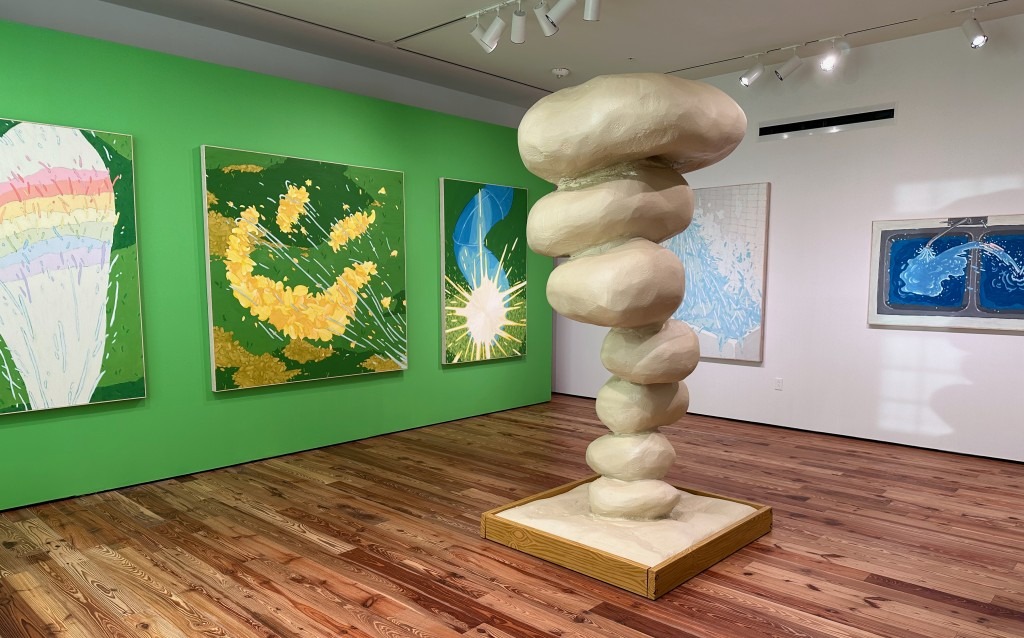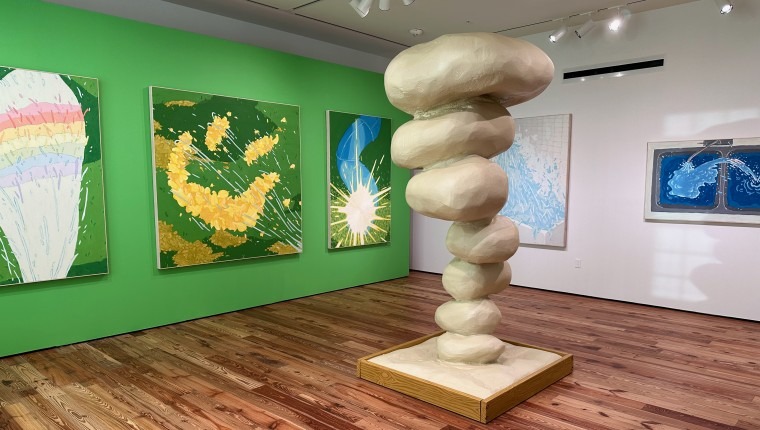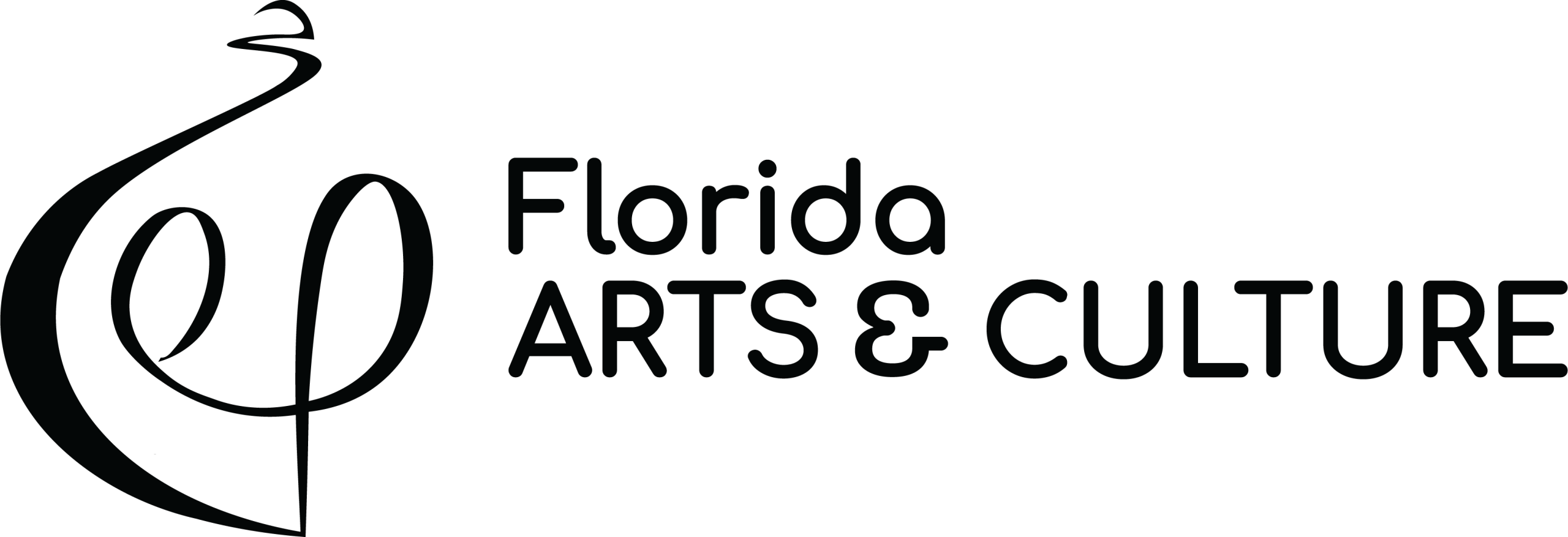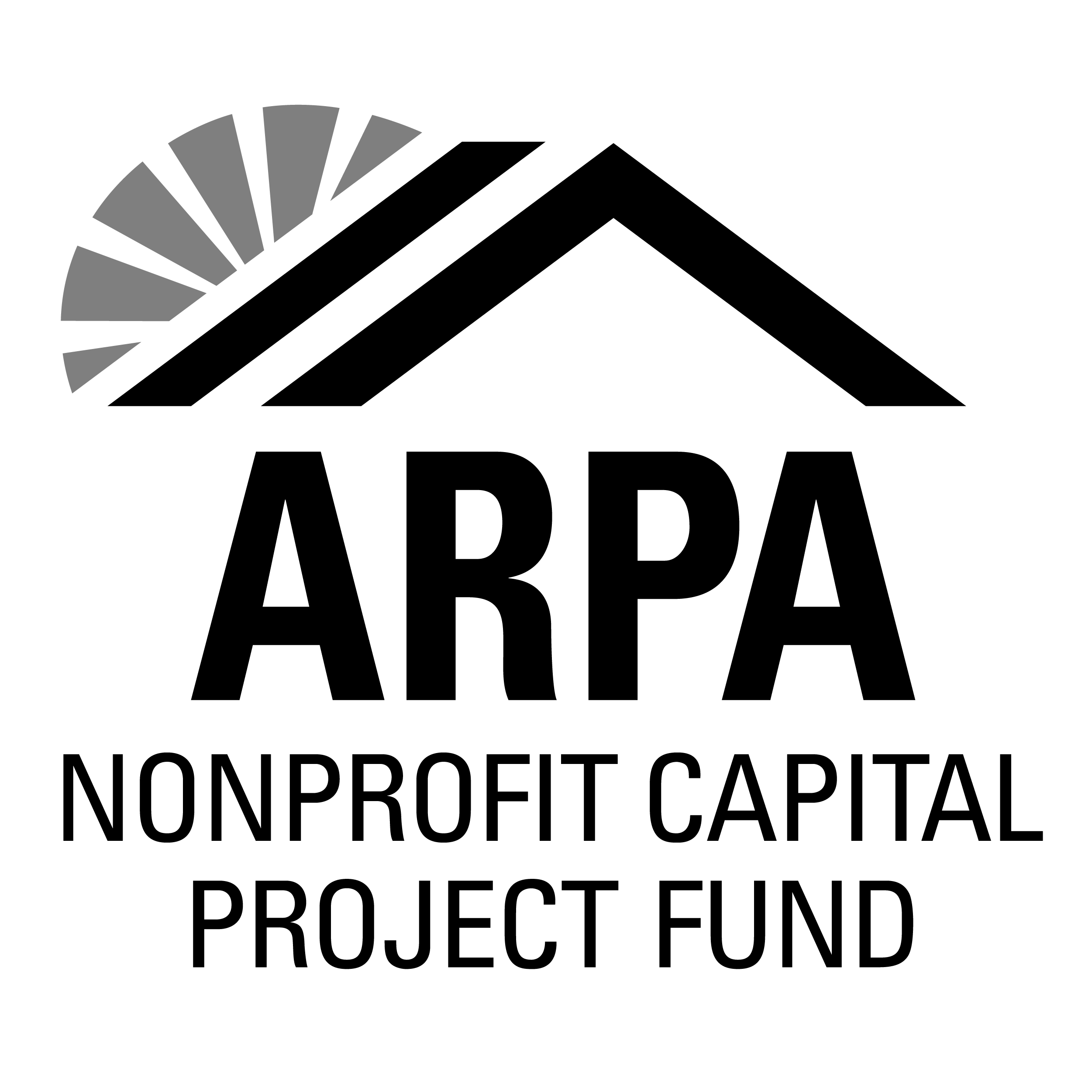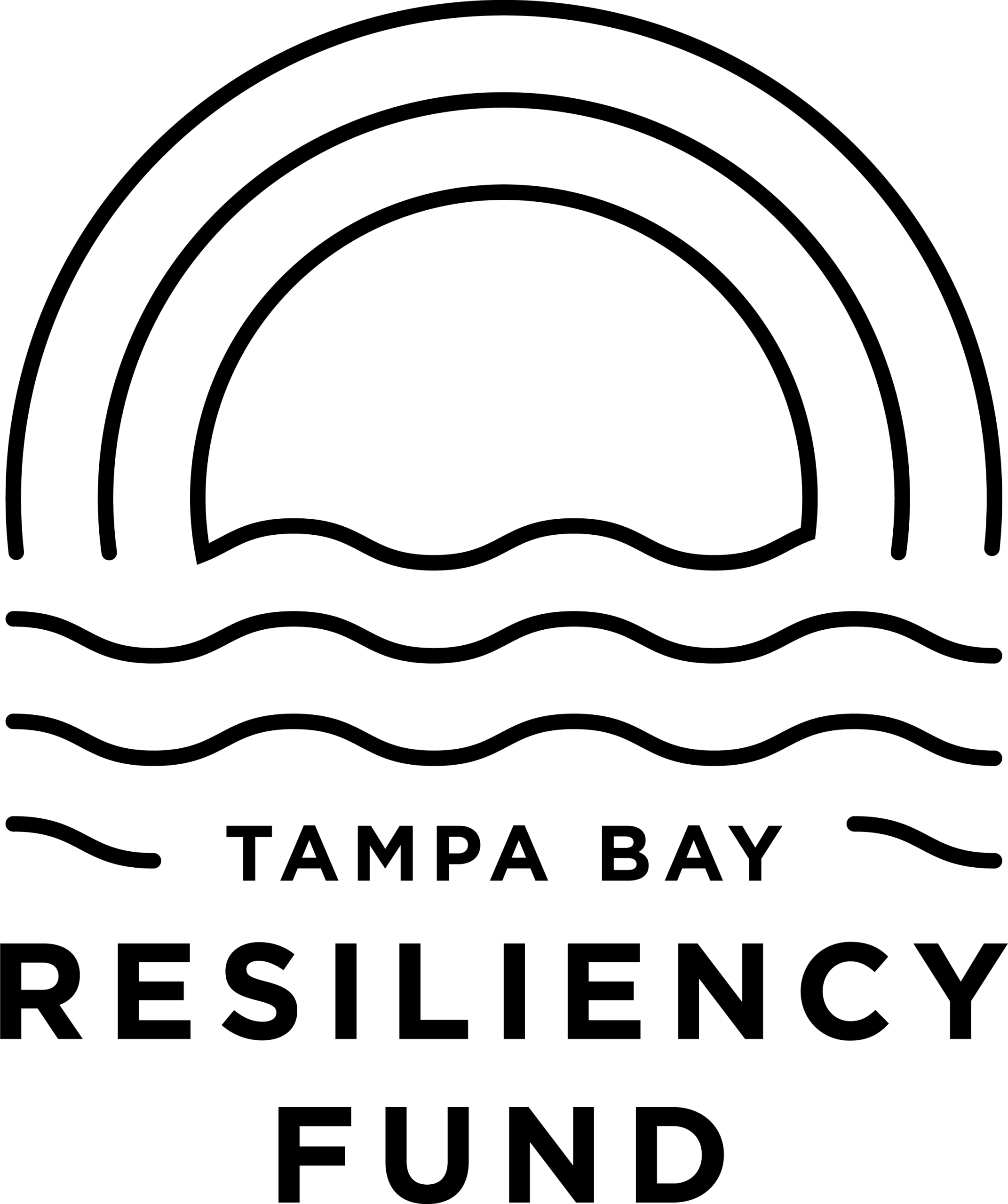Through January 25
Ringling Museum of Art, Sarasota
Through January 5
Tampa Museum of Art
Through November 23
USF Contemporary Art Museum, Tampa
Through November 3
Museum of Fine Arts, St. Petersburg
Through October 27
Sarasota Art Museum
There’re many art annuals and biennials, then there’s the Skyway triennial.
Named after Florida’s iconic Sunshine Skyway Bridge – a 4.1 mile cable-stay bridge spanning the channel where the waters of Tampa Bay meet the Gulf of Mexico.
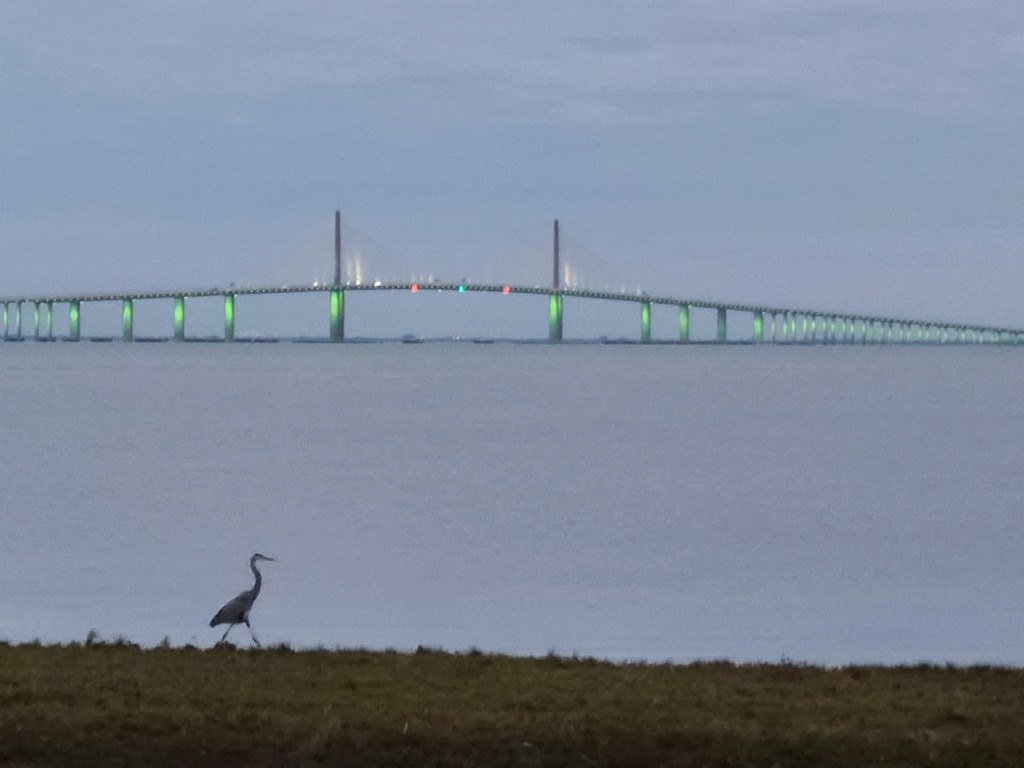
Skyway 2024 is the third collaborative iteration between museums in the Tampa Bay region. This triennial began in 2017 with three museum, then expanded to four in 2020/21 – and this year, five museums are participating.

Evan Garza, Curatorial Fellow at the Massachusetts Museum of Contemporary Art (Mass MoCA), was invited as the guest juror – and with curators at each museum doing studio visits, refined the selections from over 300 applicants to 66 artists.
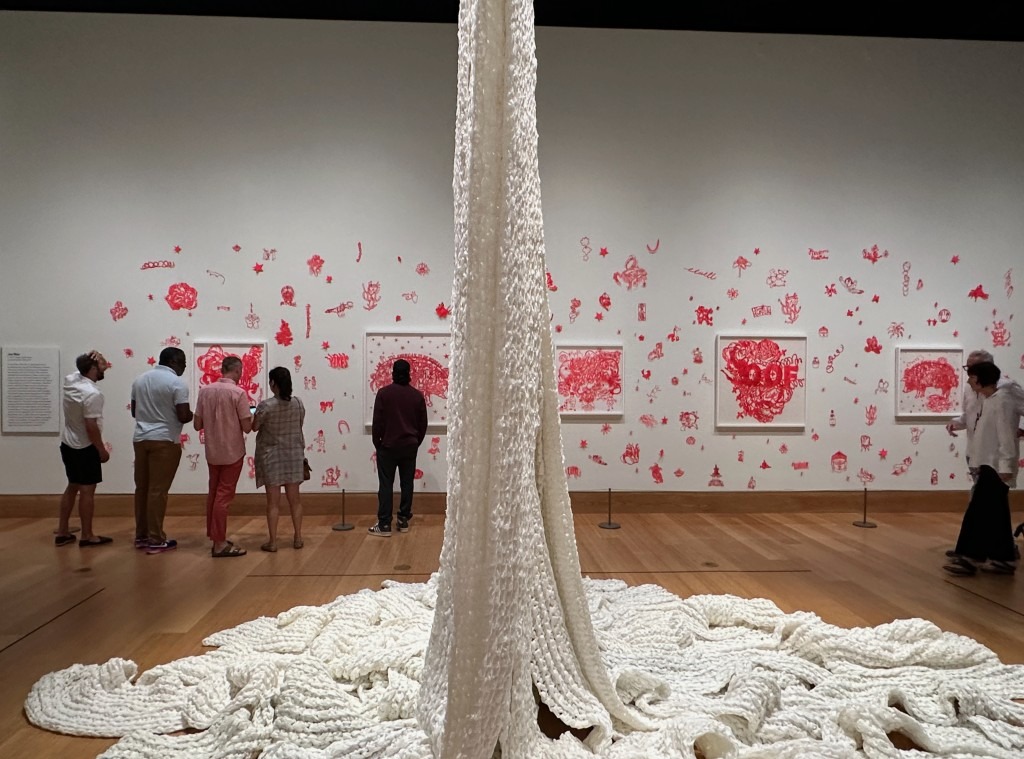
Due to their individual programing schedules, Skyway opened on different dates at each museum. The exhibition will be concurrent at all five museums from August 28 to October 27.
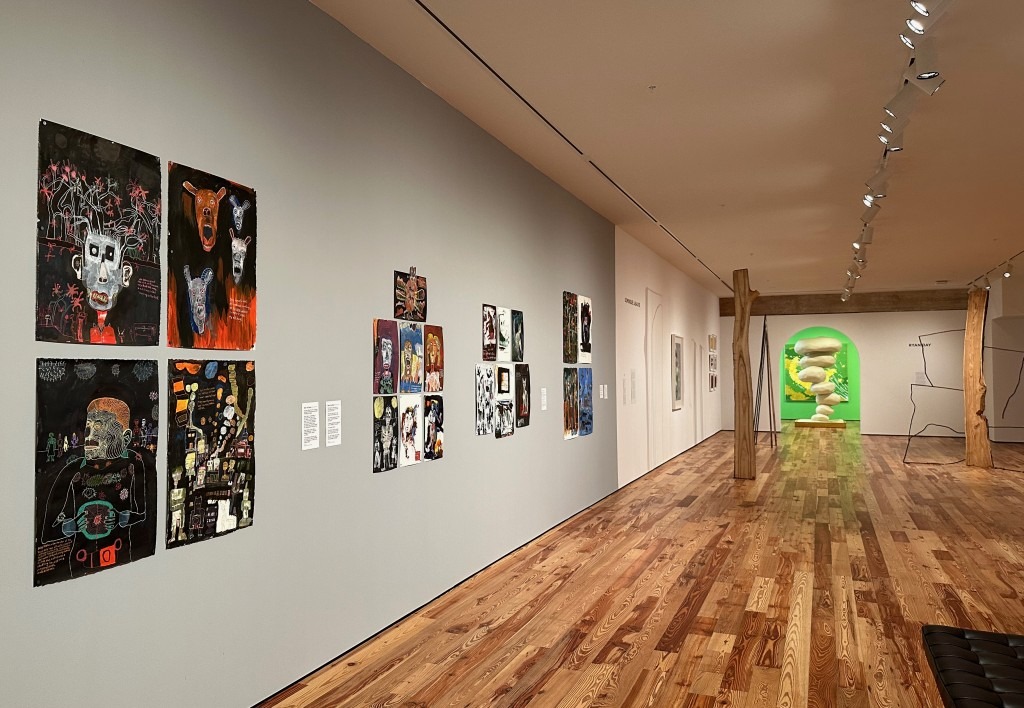
The five museums conveniently form a loop of about 200 miles, which is drivable in one day through urban, agricultural and wild landscapes of Florida.
However to properly see each portion of the Skyway exhibition would need at least three days without being rushed. Besides, you definitely want to slow a bit for the view and thrill of going over the Sunshine Skyway, suspended 190 feet above the channel waters.
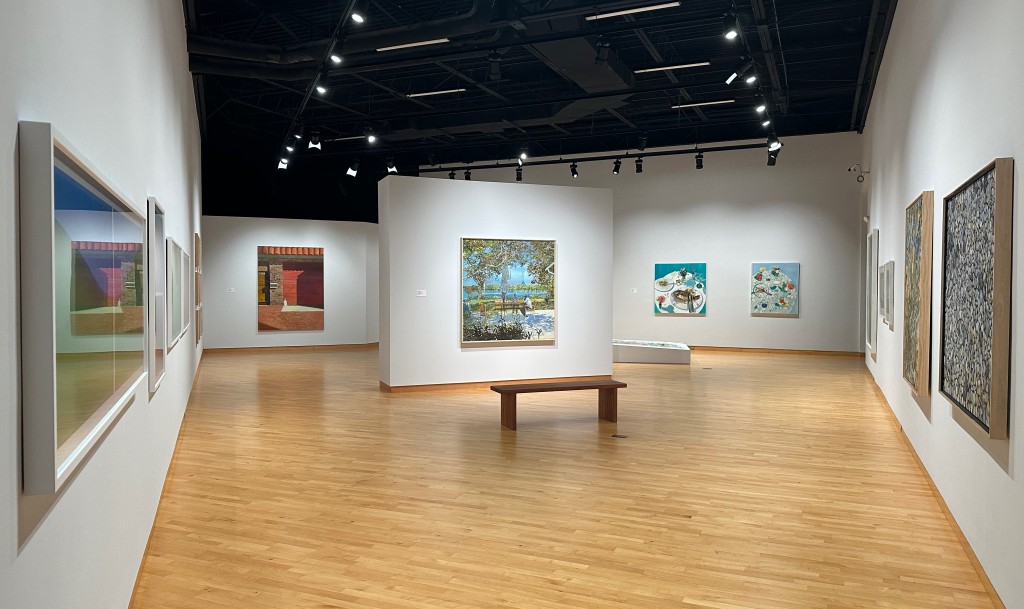
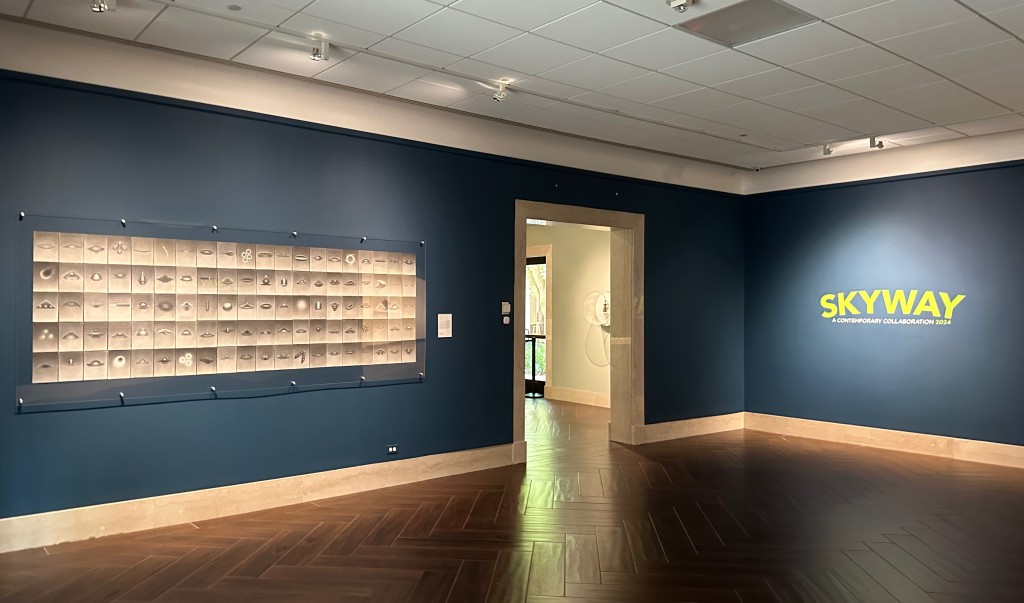
While the same arched logo brands the title wall at each museum, the artworks each curator selected and mounted in their respective galleries speak to the unique space, architecture and character of that institution.

Skyway is an anthology of short stories reaching across many boundaries. There’re several generations of artists, representing many racial, cultural and gender identities – practicing in a variety of genres, styles, techniques, materials usage, modes of presentation, and scaled from tiny one inch-sized sculptural objects to room-size installations.

That one inch object is a brooch at the Ringling’s Skyway, part of a collection of jewelry crafted by Caitlin Albritton. Rarely do art exhibitions include jewelry, which often has its own category – but here they are right in front of Jake Fernandez’s massive topological paintings, and side by side with Libbi Ponce’s anthropological sculptures.
I remarked to a friend as we were looking at the silver jewelry inlayed with gemstones, I would wear that.

Another jewelry statement is at Tampa Museum of Art (TMA) with Corinne Zepeda’s beaded necklaces, displayed next to traditional outfits and objects expressing her Seminole heritage.
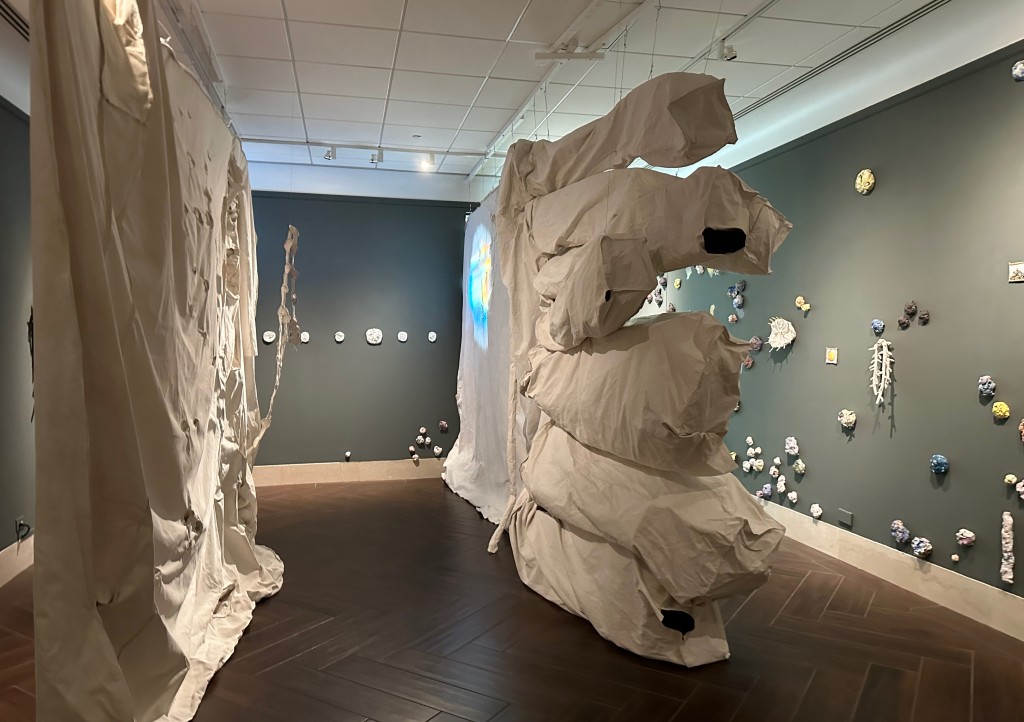
The room-size installation would be Cynthia Mason’s Secret Garden in the Museum of Fine Arts, St Petersburg (MFA). Like the 1911 book by Frances Hodgson Burnett of the same title, long lost stories are hidden in the walls.
The didactic panel described it as “Reminiscent of the ruins of Pompeii, Mason shows us the potential for catastrophe, while also highlighting the beauty of our natural world.”

The MFA ingeniously wove Skyway into the museum’s existing exhibitions and spaces – specifically the antiquities and 13th-18th century collections galleries, drawing a thread between what is now and what was then.
A double take is Kendra Frorup’s 2023 portrait of her daughter hung next to Elisabeth Louise Vigée Le Brun’s 1799 portrait of her daughter, with both daughters in the exact same pose.

So Mason’s Secret Garden, like an active archeological dig, is installed in the one of the museum’s antiquities galleries, previously set up for a conservation demonstration on one of their recent acquisitions, a 17th century Spanish Tabernacle.
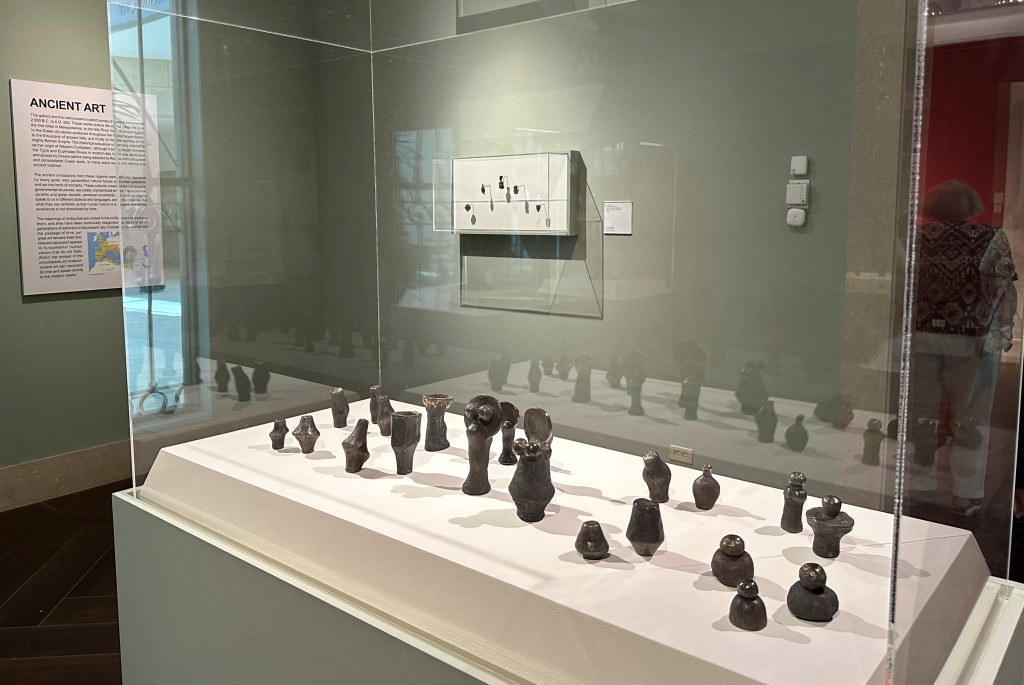
In the connecting galleries, if not for exhibition labels with the Skyway logo, one could easily mistaken several groups of small bronze objects in Anat Pollack’s Hypnos’ Garden as part of the museum’s collection of figurines, torso fragments, fertility figures, pottery shards. . . remnants from ancient cultures.

Perfect product placement is Emiliano Settecasi’s micro-museum titled Department of Contemporary Art, which until recently operated out of Ybor City’s Kress Contemporary, stirring up debates on art, commerce and capitalism.
The whole shebang is now set up in the MFA’s gift shop among the souvenir T-shirts, art books, post cards, bric-à-brac. . . and is on sale for $499,999.99. This might hold the record as the highest priced work in the history of all Skyway exhibits.
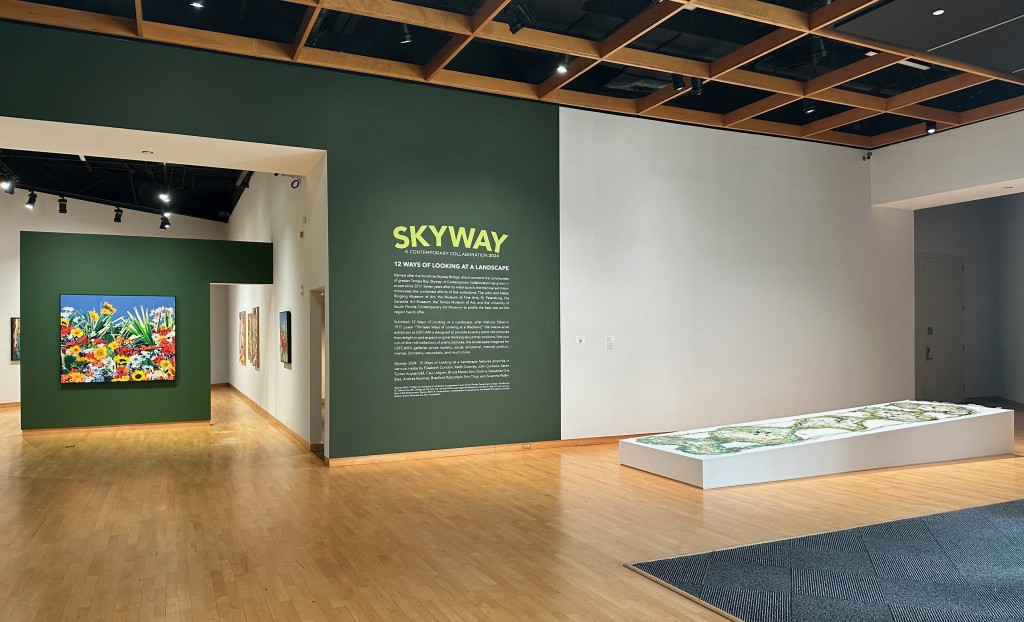
At the other end of the spectrum is complete transformation of space. Focusing on the landscape genre, the University of South Florida Contemporary Art Museum’s (CAM) galleries became a whole landscape to navigate. They have even added a subtitle to Skyway – 12 Ways of Looking at a Landscape.
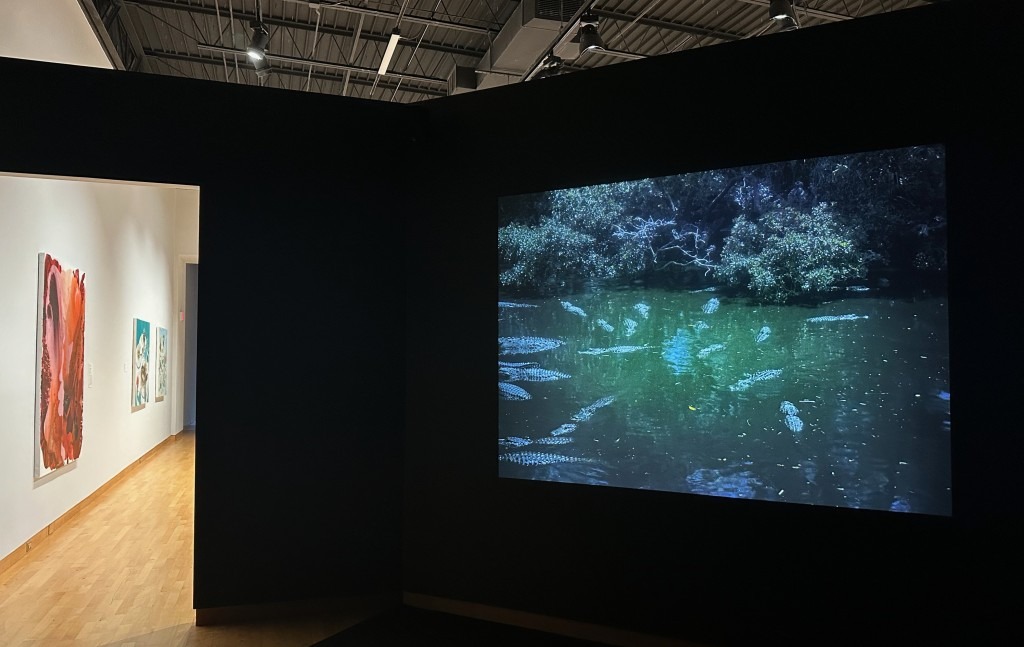
The definition of landscape here has a wide latitude. Landscape here is literal and metaphorical, actual and imagined, moving and static.
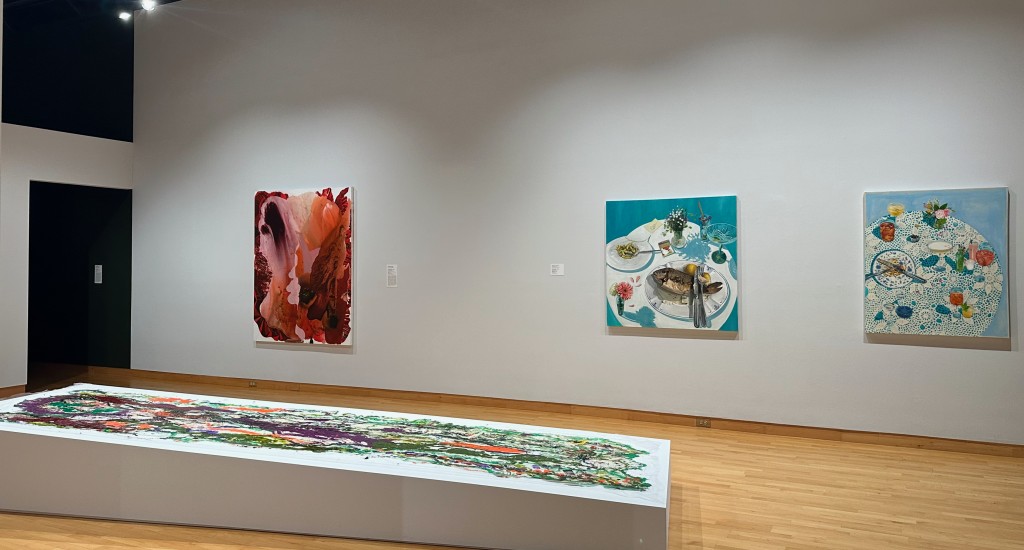
Blurring these lines are Sebastian Ore Blas’s intimate table-scape paintings – mini tableaux, closer to still lifes pointing to identity. Two particular pieces, Fishy Things and Solstice, both table settings floating on cool pools of blue are hung next to Elisabeth Condon’s complementary colored Burning Embers – a painting with deep orange-reds like flowing lava, like visiting Iceland’s volcanic landscape, walking its geologically carved fields, then submerging into Blue Lagoon waters.

Keep on walking and there’s Susanna Wallin’s Will’s Hill, a video taken from a birds eye view of a section of the Hillsborough River projected onto the floor in the passageway between CAM’s East and West Galleries, creating the illusion of walking on water Jesus-like. It’s a vertigo inducing walk as the water flows underfoot.
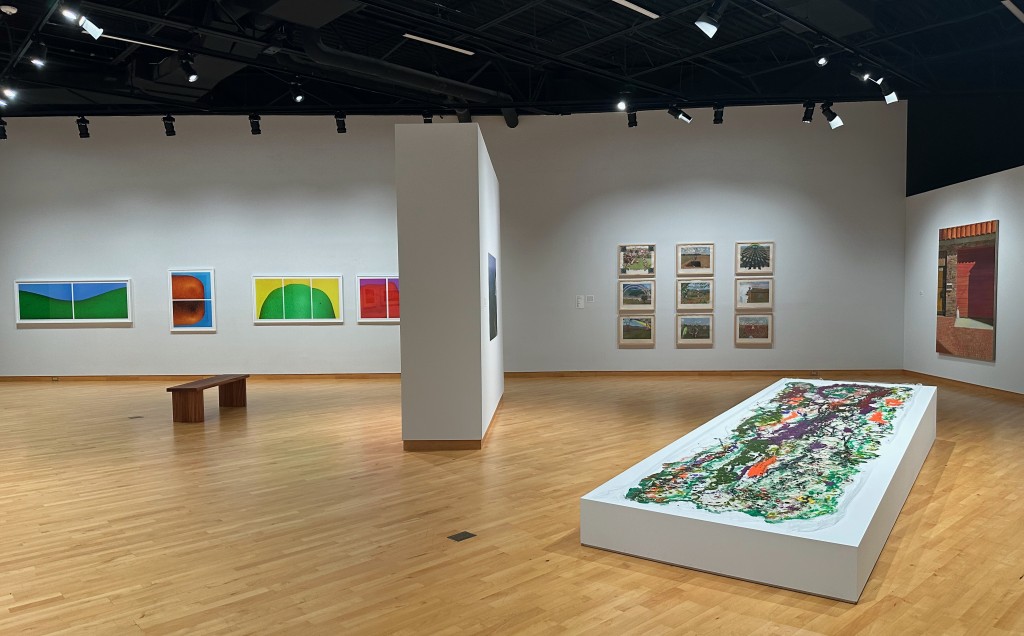
You can take a virtual tour of the CAM’s Skyway exhibit
and download the exhibition brochure
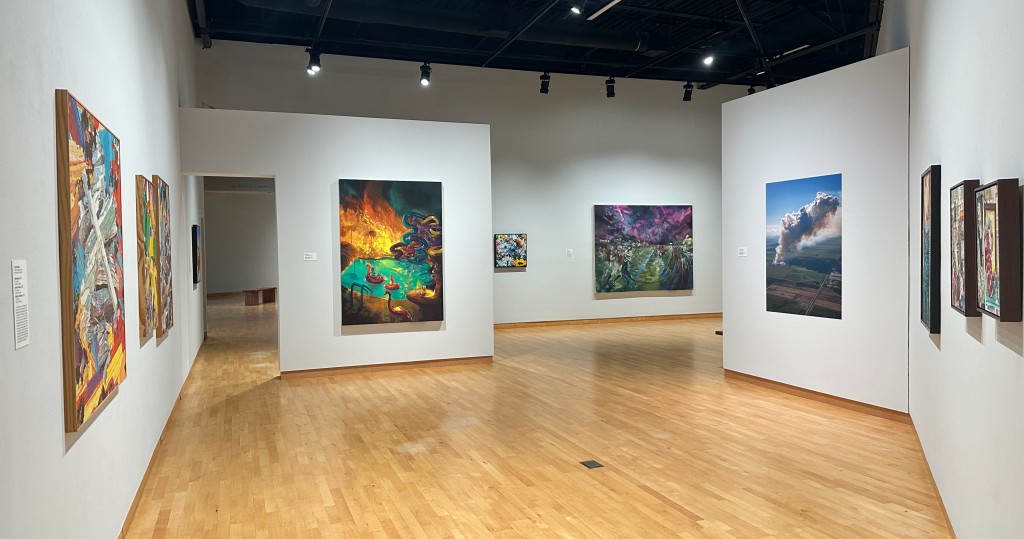
Other pieces redefining landscape are Erin Titus’s tightly-cropped interior-scapes, John Gurbacs and Karen Tucker Kuykendall discovering very different takes on pattern making, Bradford Robotham zooming in on his body’s terrain; and Eric Ondina’s recreation of ideologically confused social spaces.
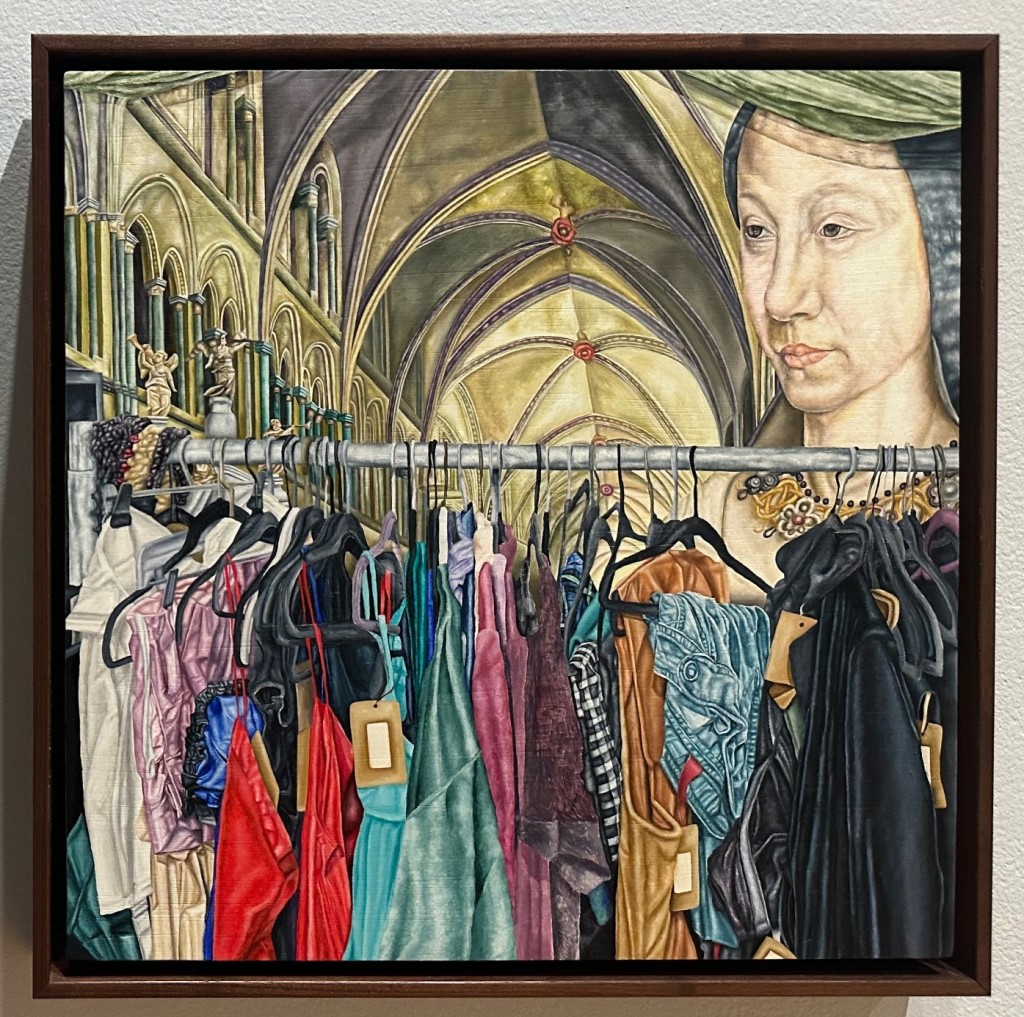
Landscape is not exclusive to CAM.
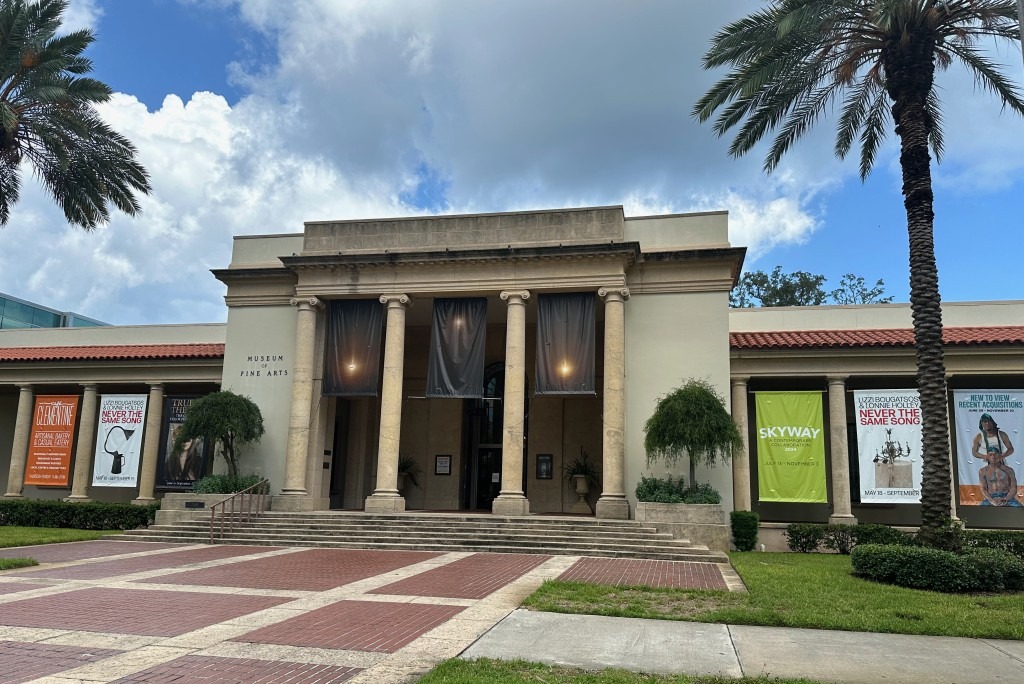
There’s Will Douglas’s Finland setting Sun triptych banners hanging between the columns on MFA’s façade.

At TMA is David Sibbitt’s cultural reference-filled landscapes with tornados and even a whirlpool.
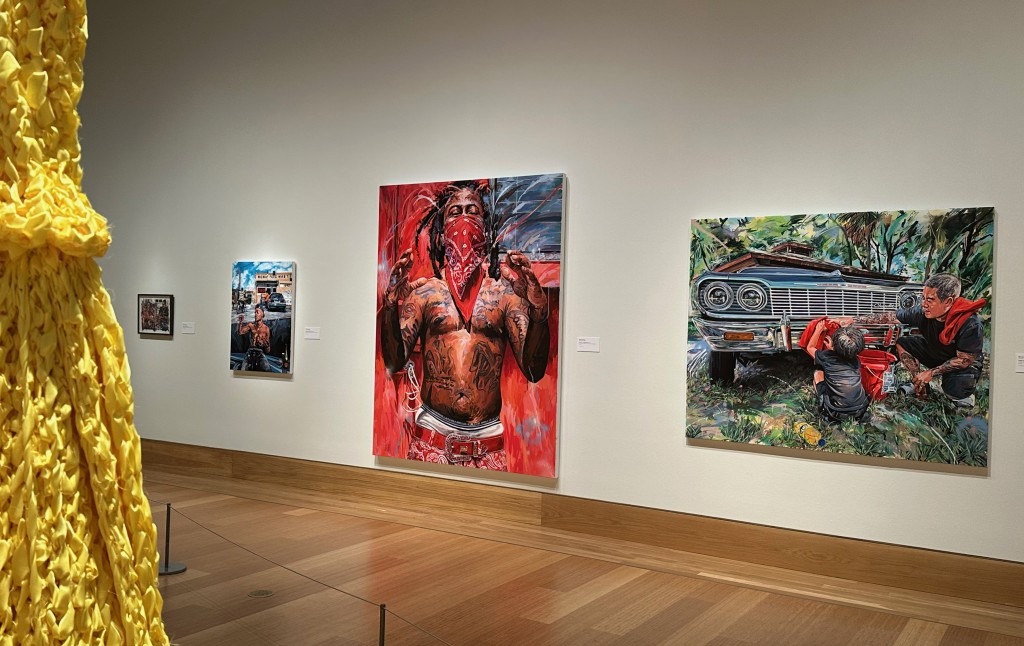
Michael Vasquez’s paintings at the Ringling explore the street scenes in his neighborhood. “The resulting paintings are rich with coded visual cues that inform identity. . . These elements, along with pose, gesture and expression, all come together to legitimatize a complex emotional landscape and social dynamic. . .”
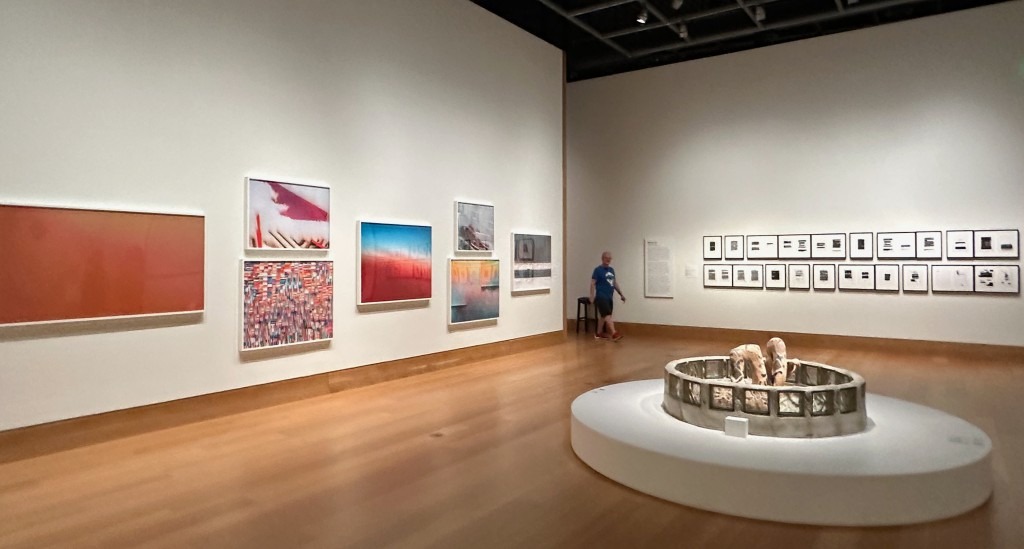
In the adjacent gallery is Mohsen Azar’s conflict zone landscapes. He spoke in-depth with Tom Winchester in another Arts Coast story on these conflict images that simultaneously reveal and hide trauma.
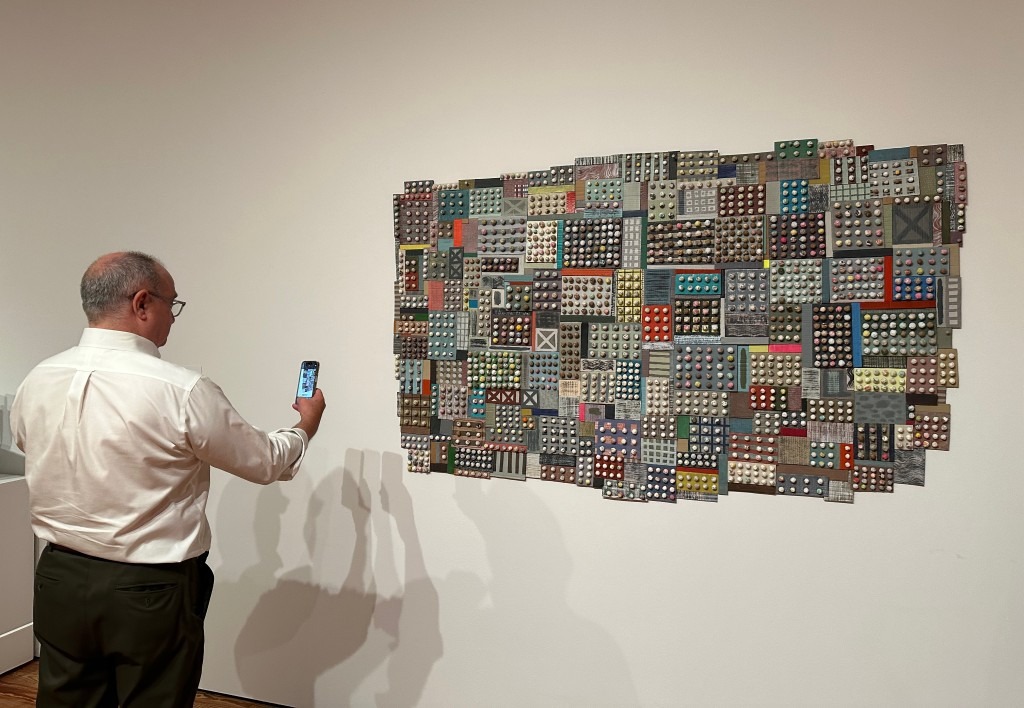
Down the road at SAM is Motherboard by Sue Havens. Many artists have used computer motherboards as a cityscape metaphor. Havens, professor of painting and drawing at USF, made her Motherboard not from electronic parts, but from rolling up notes, test papers, junk mail and various ephemera into little balls and organizing them on flattened Amazon boxes while attending Zoom faculty meetings during the Covid lockdown. This gridded cityscape also look like a display of boxes of chocolates.
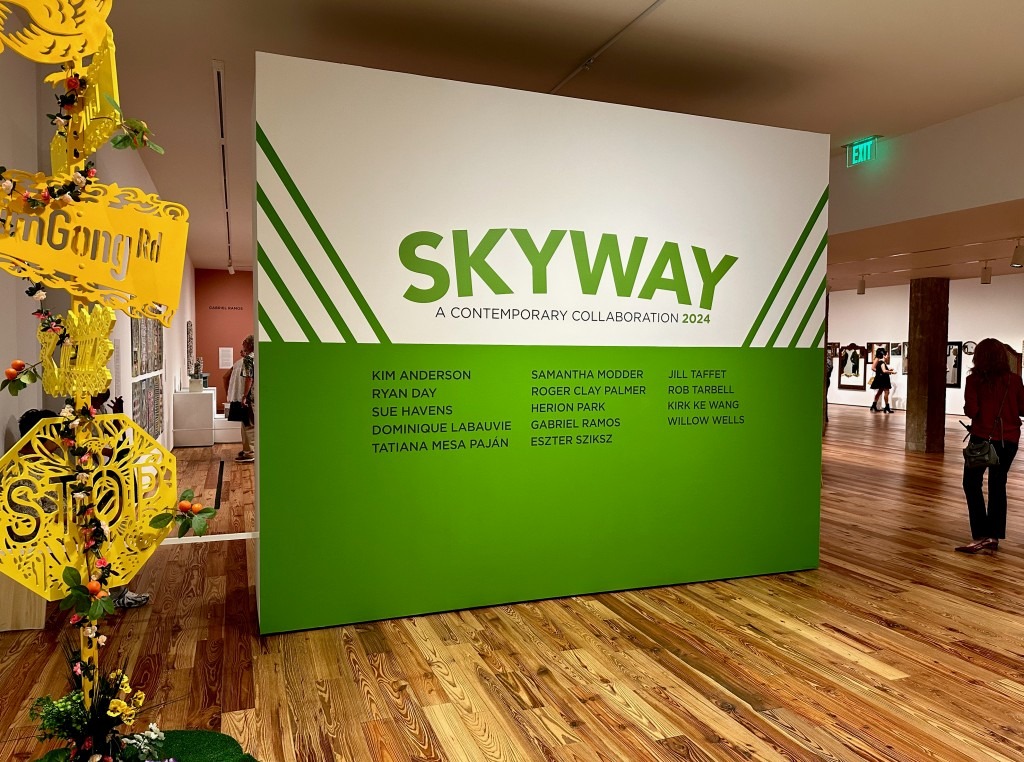
Besides landscape, selections at Sarasota Art Museum’s (SAM) Skyway carry a strong undercurrent of identity, another of several themes running through the whole of Skyway.
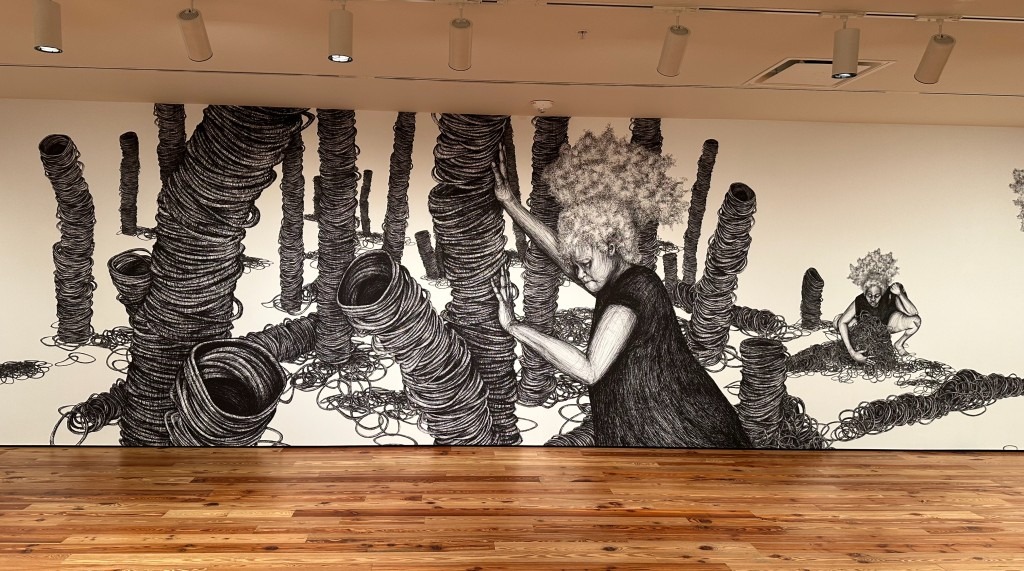
Samantha Modder with her humorous wall drawing of hair ties.
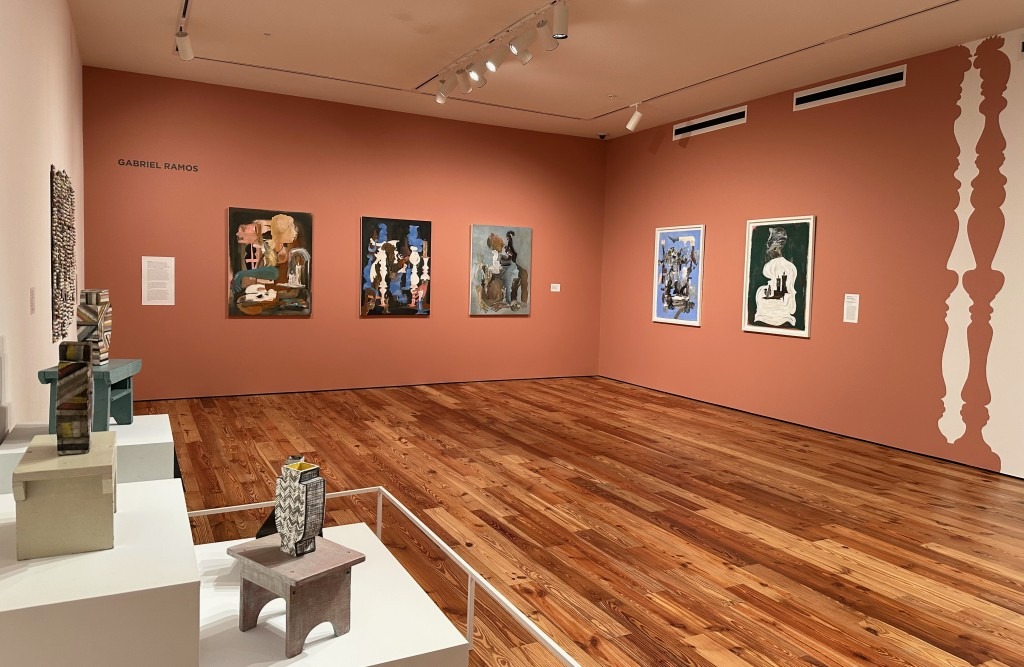
Gabriel Ramos’s site installation created a personal space to reflect on his sexual identity and self image.

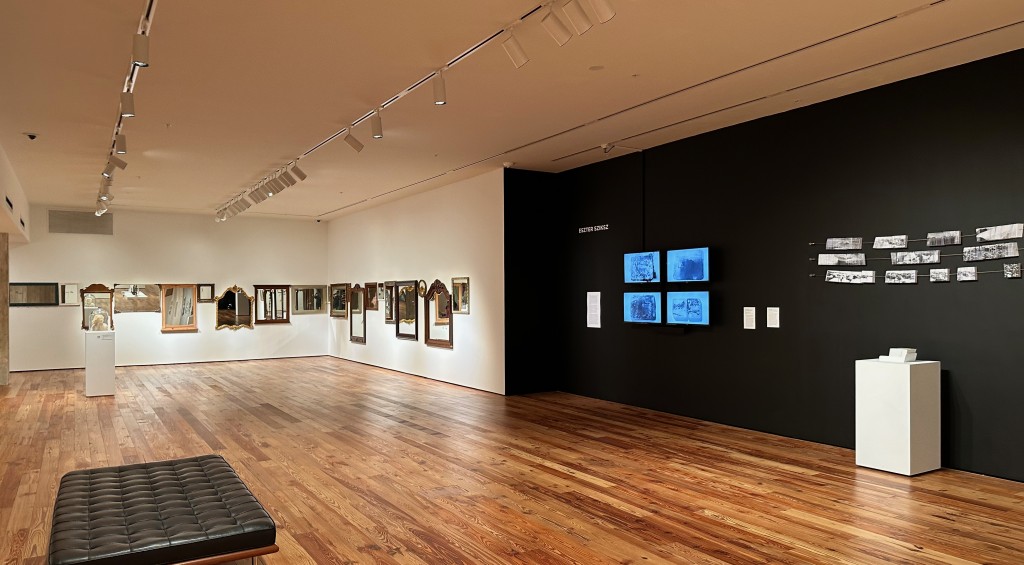
Tatiana Mesa Paján’s two bodies of work addressing aspects of where she is from and where she is now.
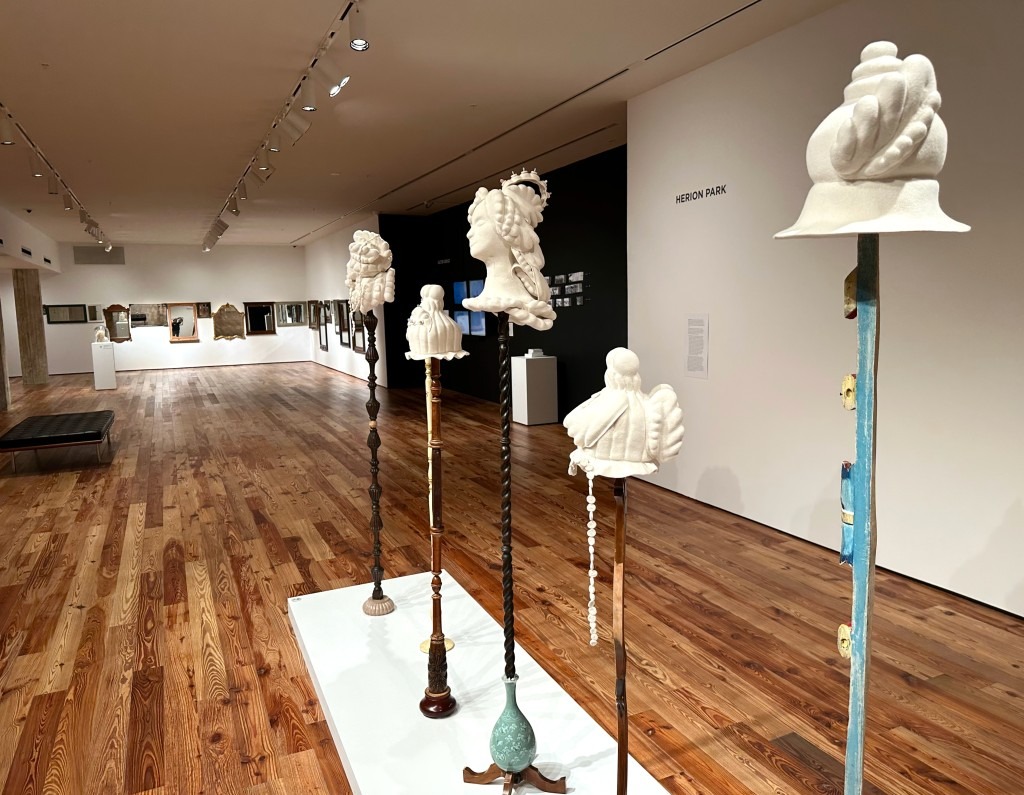
Herion Park with her series of soft wool sculptures like tribal headdresses.

Willow Wells camouflages body fragments into her landscape (which Aimee Jones also does in her table-scape paintings at the TMA Skyway).
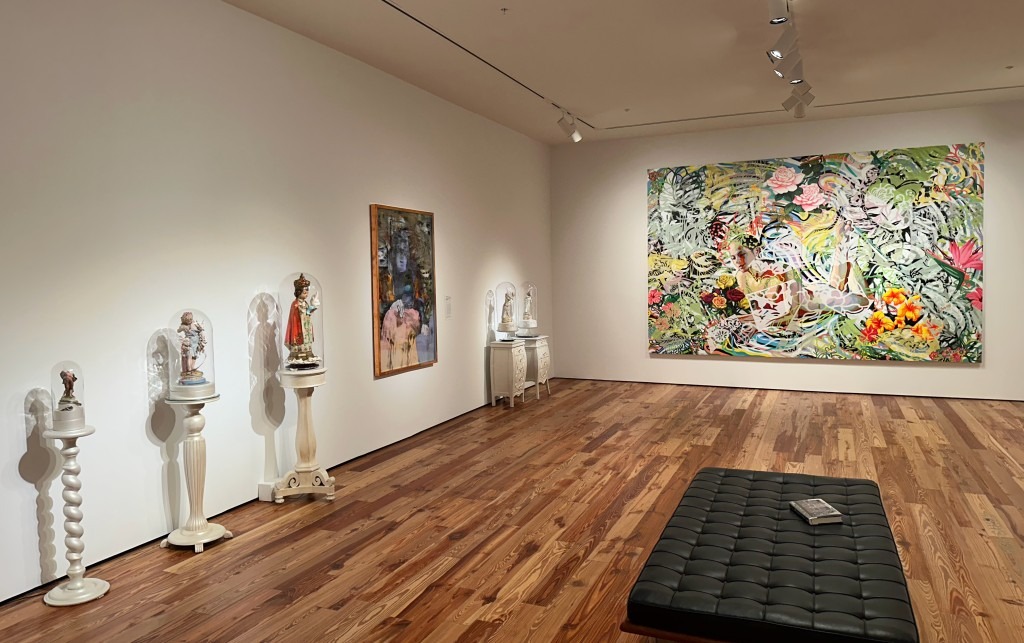
Kirk Ke Wang’s GimGong Road project for Skyway delves into several identities within one person, as he writes in an Arts Coast story on the extraordinary Lue Gim Gong.
Wang’s Gimgong Road invokes memories of countless people throughout this country of immigrants leaving their mark. It reminded me of a trip to California’s Death Valley where a friend took me to China Ranch Date Farm.
Around 1890, a Chinese man, Ah Foo successfully established a ranch raising livestock, growing fruits, vegetables and hay to feed nearby miners and their draft animals. It became a favorite spot for respite. The story goes that another man named Morrison ran Ah Foo off his ranch at gunpoint, killed him, then claimed the ranch as his own. Morrison was not as successful and had to sell the ranch. That ranch has changed ownership a few more times since, but the name China Ranch remains to this day.
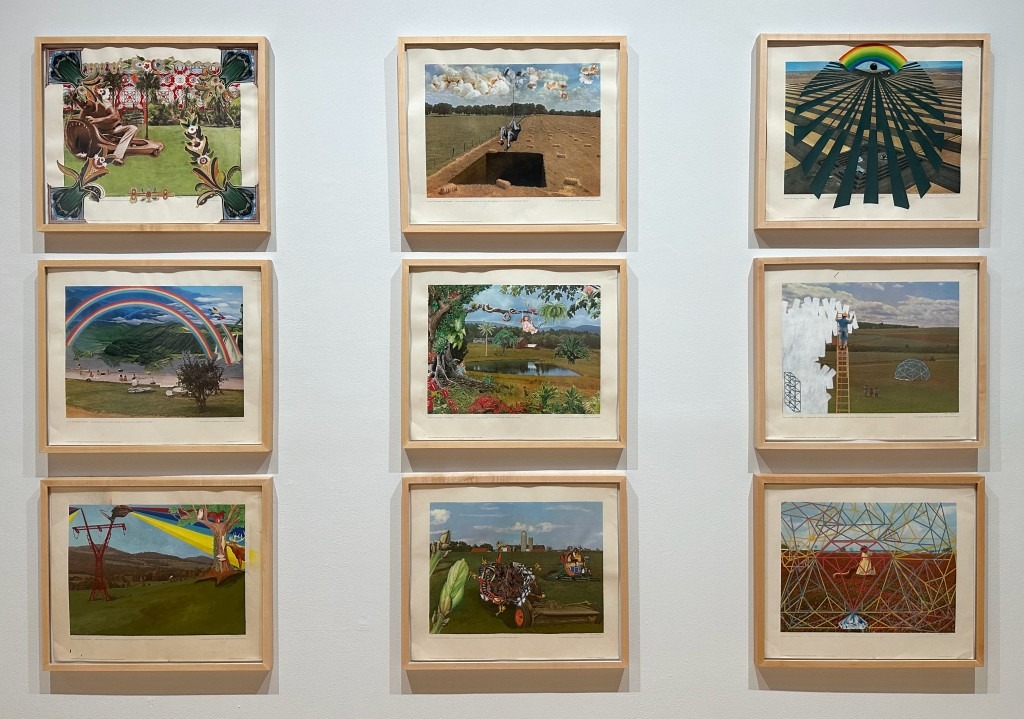
Could be landscape, could be identity, could be other ideas. Some works in Skyway can be interpret in as many ways as there are viewers.

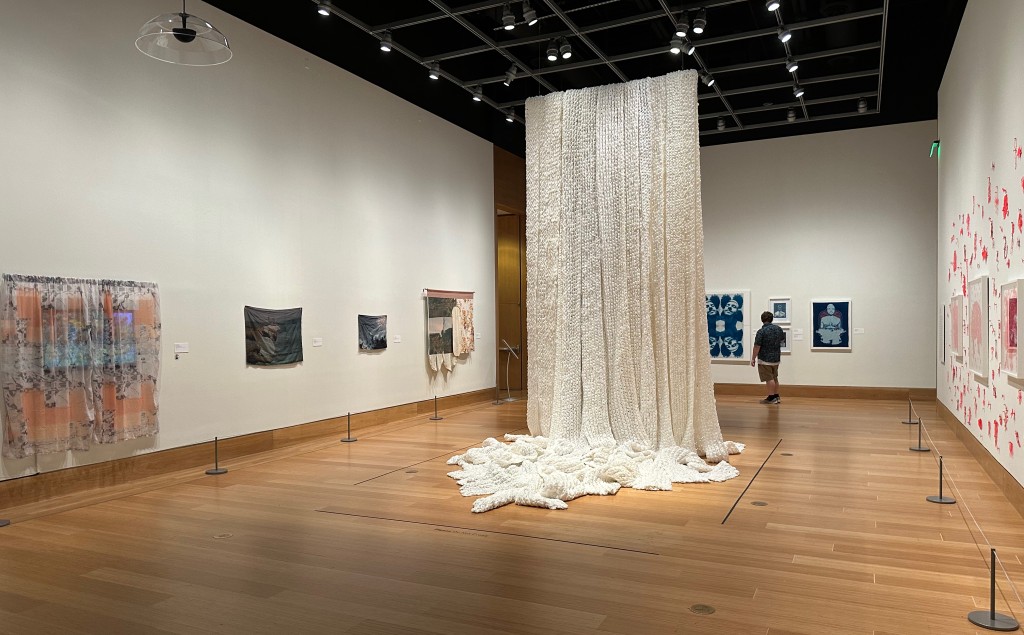
At the Ringling, the giant crocheted forms by Akiko Kotani tackle long durations of time with subtly changing surface textures.
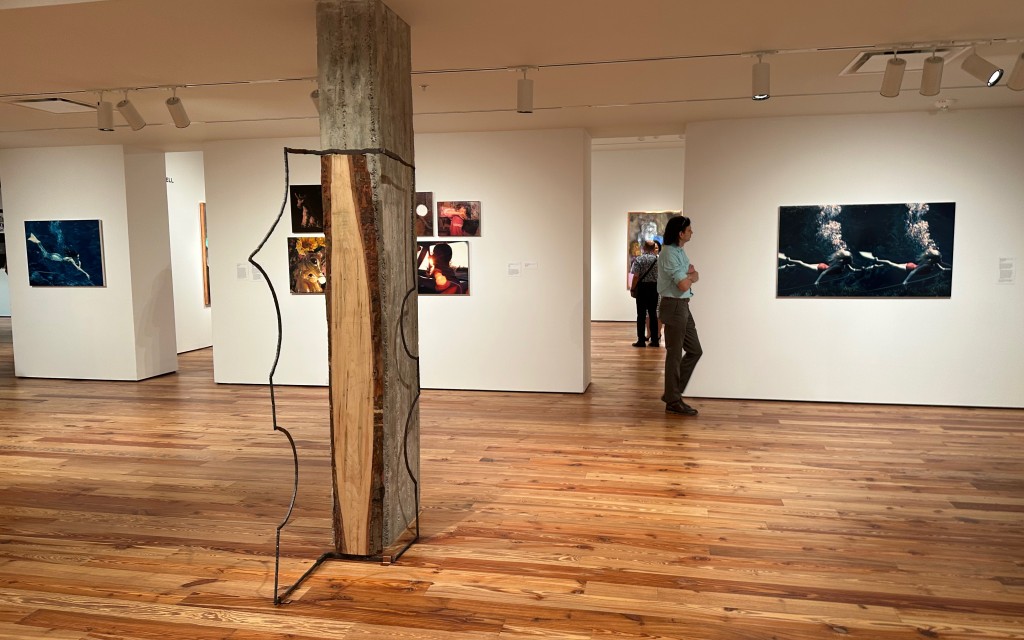
Dominique Labauvie’s Forest series at SAM that, but for the plank of wood, is mostly air, the way an atom is mostly space.

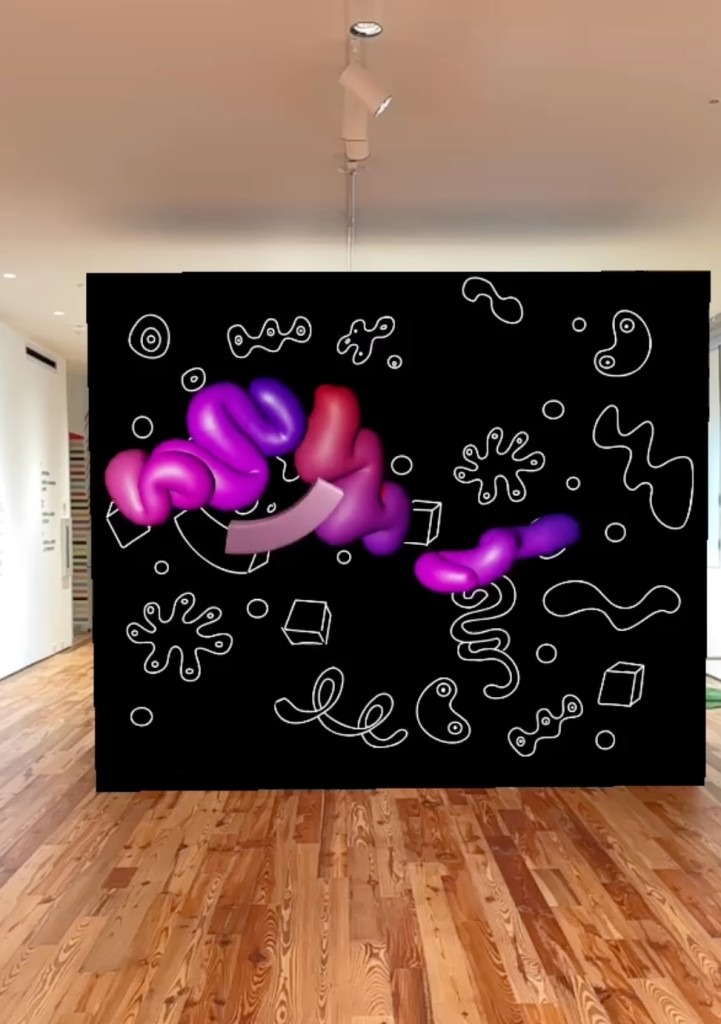
Jill Taffet’s Sentient Beings has a QR code link to download an app to fully engage her squiggly wall drawings at SAM.
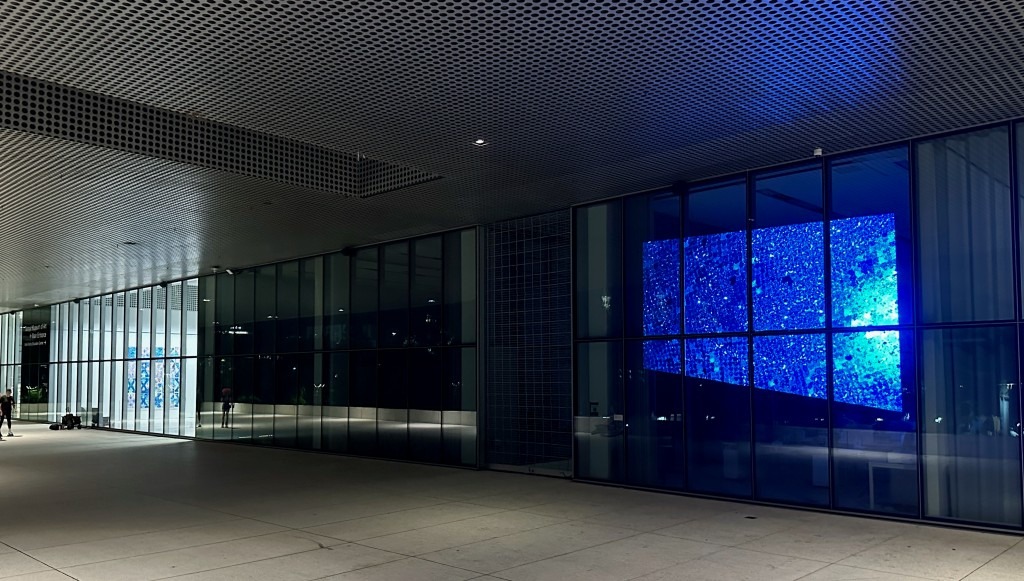
JD Hardy’s site specific installations explore fracturing light at Tampa Museum of Art (TMA).

TMA is unique in that all the artists are Skyway first timers. Walking through their long gallery, one superior vista is a line of ceramic vessels by David Mack in front of a wall of paintings by Dallas Jackson. It was a minute before I searched for labels to see what I was looking at.
Each of Mack’s vessels portrays African Americans important to history, like Harriet Tubman or Black artists who are underrepresented or unrecognized. One is of David Drake (the vessel on the far right). I recognized this name from the exhibition Hear Me Now, The Black Potters of Old Edgefield, South Carolina at the University of Michigan Museum of Art last November. Drake was one of the enslaved potters at Old Edgefield.
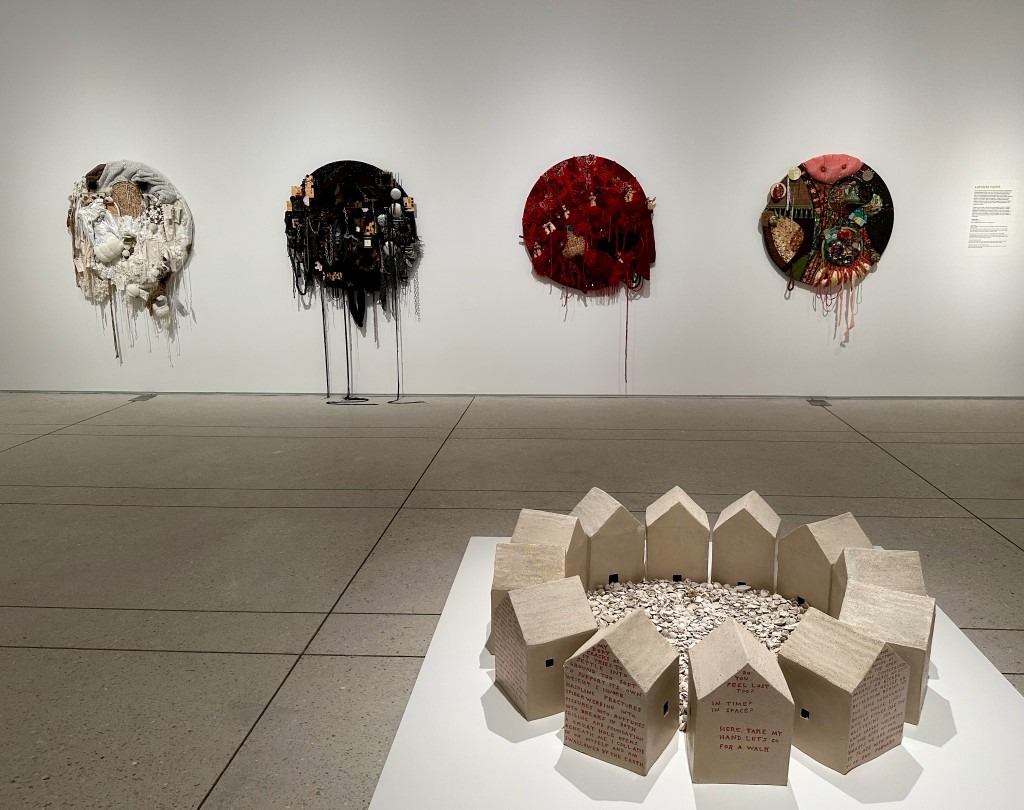
Old Edgefield is a district on the western edge of South Carolina famous for its natural clay, and for about 50 years before the Civil War, stoneware vessels – an essential item for much of life at that time, particularly in kitchens to keep ingredients cool, fresh and safe from pests – were crafted on an industrial scale by enslaved men, women and children.
The quality of David Drake’s stoneware vessels were such that he was even allowed to sign his name on stoneware he made. On one storage jar he inscribed – I made this jar=for cash-/though its called=lucre Trash/Dave/Lm Aug. 22, 1857/Dave.
The exhibition label explains – Writing in the first person, Dave signs his name not once but twice and declares, “I made this jar=for cash”…
Though it’s rare, it was not unheard of for enslaved people with craft skills to sell their services for money. In many cases, they used their earnings to buy themselves or their loved ones out of slavery. . .
The verse may also be ironic pointing to enslaver Lewis Miles’s gain at Dave’s expense. “Lucre” refers to money or profit, often gained through sordid or dishonorable means.
Like a mirror reflecting back to the vessels are the equally strong paintings by Dallas Jackson of contemporary Black life advancing in spite the legacy of segregation and institutional oppression.
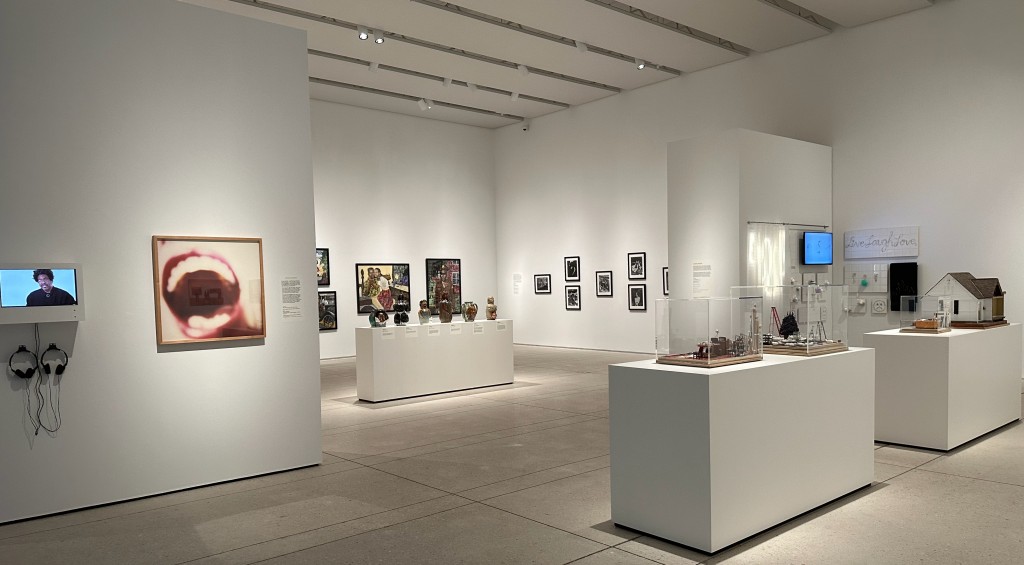
These first timers in Skyway share gallery space with a memorial to the recent deaths of two artists who were in previous TMA Skyway exhibitions, Wendy Babcox and John Sims. Both were highly creative and respected beyond the art community. In the aforementioned conversation that Mohsen Azar had with Tom Winchester, Azar spoke of Babcox’s influence on his artistic progress.

So that’s a recap of my encountering some 314 works from the 66 Skyway artists – first timers, second timers and third timers. The count may not be accurate as some works like Pollack’s Hypnos’ Garden include 34 individual pieces, but it was counted as one since the whole installation was under one title.
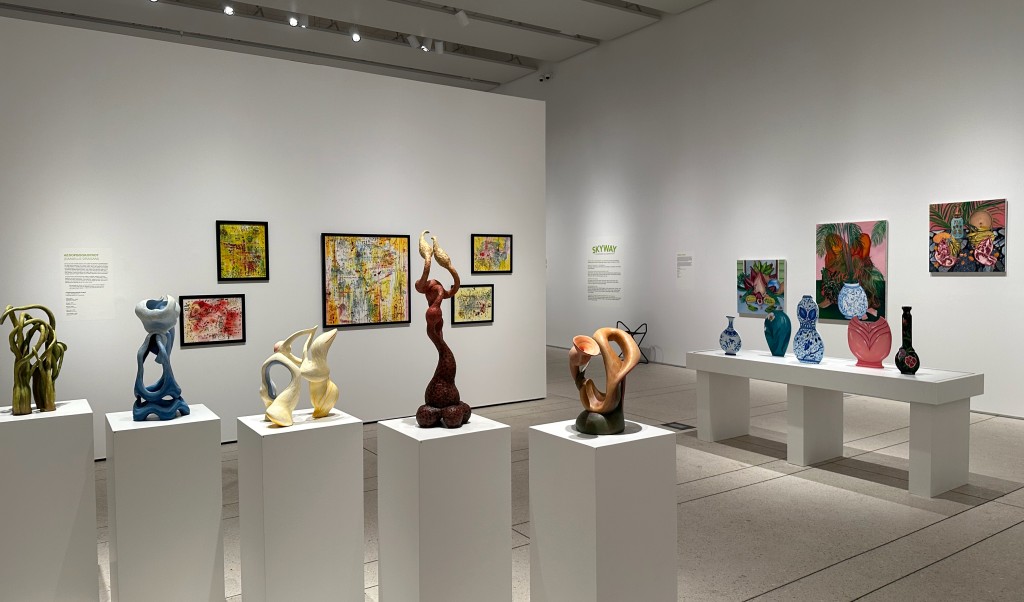
There is a catalogue providing bios for each artist that is available at all the museums.
Happily, these folks are our neighbors.
